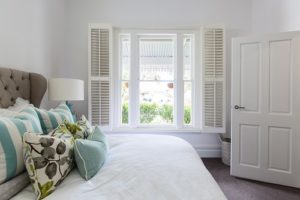
 Shutter Blinds are items that come in many designs and in many configurations because homeowners have different tastes in style. This is similar to other decor items that can be added to a home. When it comes to shutter blinds, Tampa residents can also choose the material that they want that is independent of the design or style of the shutters themselves. Some shutter designs are better at letting in more light, while other designs are better at providing the homeowner more privacy. Here are some different types of shutter blinds that homeowners can look into when they are thinking about upgrading to shutter blinds.
Shutter Blinds are items that come in many designs and in many configurations because homeowners have different tastes in style. This is similar to other decor items that can be added to a home. When it comes to shutter blinds, Tampa residents can also choose the material that they want that is independent of the design or style of the shutters themselves. Some shutter designs are better at letting in more light, while other designs are better at providing the homeowner more privacy. Here are some different types of shutter blinds that homeowners can look into when they are thinking about upgrading to shutter blinds.
Vinyl Shutter Blinds
Shutters can be expensive for some homeowners depending on the type of material they are made from, but often times the cheapest alternative is Vinyl shutter blinds. Tampa residents should know that even though this material often costs the least amount, they are still weather resistant and good at handling moisture. In order to make them stronger, a shutter blinds manufacturer while having them fitted with PVC or aluminum. There are different types of Vinyl shutter blinds such as hollow vs solid Vinyl designs.
Composite Shutter Blinds
Another type of Shutter Blinds that are popular among homeowners are ones made out of composite materials. Most people know these types of shutters as faux wood or fake wood shutter blinds. Tampa residents should know that composite materials are often MDF material wrapped in a vinyl or PVC coating.
Wooden Plantation Shutters
Wood is another very popular material that can be made into shutter blinds. Tampa residents should be made aware that many types of wood are used to make shutter blinds because different types of wood have different colors and wood grains that appeal to different homeowners. Wooden materials are a lot different from others that are used in shutter blinds because they are affected by the different conditions in an owner’s home. For example, when compared to vinyl shutter blinds, Wooden materials are susceptible to moisture and humidity of a home.
*Disclaimer: The views expressed here are those of the authors and do not necessarily represent or reflect the views of Shutter Professionals*

